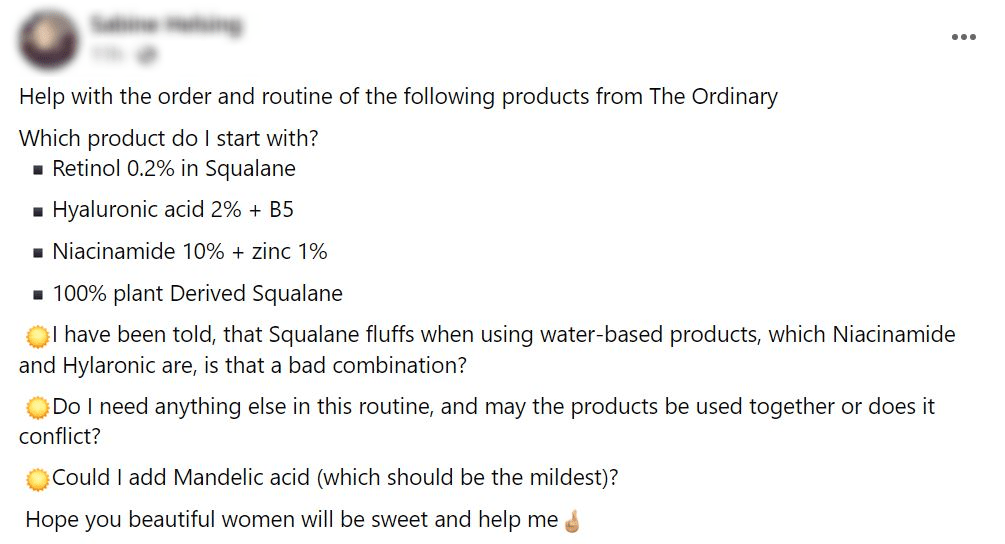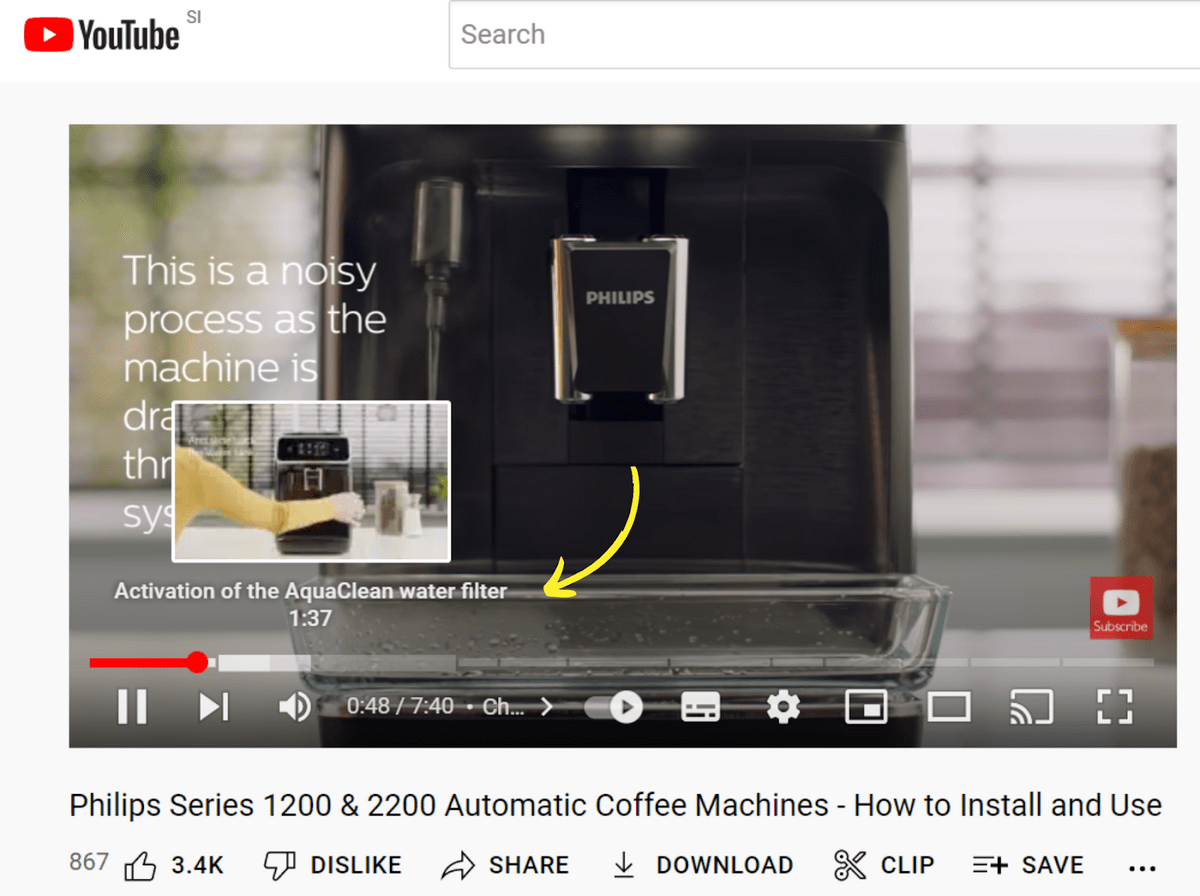
Many people think that customer service only applies to human-to-human interaction. But it is far from the truth!
Customer service is not only about answering questions and solving problems after your customers reach you. In fact, 72 % of customers prefer to find answers on a website!
Content is the way your brand proactively communicates with your potential and current clients. Don’t wait for your customers to ask you questions, or even worse look for the answers somewhere else. Give it to them on a silver platter and make their experience exceptional.
We will show you how to master the art of customer service content with a strong strategy and tips on how to make your content stand out.
Effortlessly export your Google Docs to WordPress with just 1-click.
Get Started Today
Let’s talk data. According to Microsoft’s Survey, for 96 % of people, customer service is important in their choice of loyalty to a brand. Additionally, 73 % of customers will consider switching to a competitor just after one bad customer experience, as The Northridge Group found out.
With that said, it is sure that customer service is a key to building strong relationships and making loyal customers that will not only come back but also recommend you and bring more clients. Because their experience was just awesome.
There are plenty of effective customer service strategies, but it is no longer only about reacting to the customer’s requests. As we said before, they mostly prefer to find the answers by themselves. So let’s make it easy and smooth for them by providing great customer service content!
Besides that, it can become your advantage among competitors, and last but not least, reduce the time spent answering the same queries.
To make helpful content, you need to know what are the questions running through customers’ heads. And then figure out how to answer them, ideally better than your competitors. That requires a lot of empathy so you can get into your customer’s shoes. But also data. Understanding your customers’ expectations and pain points is essential for crafting a content strategy that enhances customer satisfaction. By addressing their concerns proactively through well-structured content, businesses can minimize frustration and provide a seamless user experience, ultimately improving engagement and trust.
Many companies now complement this with AI phone calls, enabling 24/7 automated support and consistent query resolution.
This is crucial so the content actually does its job. Here are the five best ways to see what people need your help with.
Not only the customer service team but also sales representatives, shop assistants or social media community managers will give you tons of useful insights. What questions do they hear repeatedly? What are your customer’s most common issues? Are there features that customers aren’t using that you could shed some light on?
Did you know that 68 % of online activity begins with queries in search engines? Ask your SEO specialist to do keyword research focusing on the phrases directly connected to your products or services. And also look at your website analytics to determine what people are searching for in terms of help or questions. or turn to customer surveys like your Net Promoter Score to discover issues affecting your customers most.
In addition to the data sources mentioned above, consider measuring your email response time to identify areas for improvement in your content strategy. By understanding how long it typically takes your team to respond to customer emails, something you can easily track with a contact manager, you can tailor your content to address frequently asked questions or complex issues that may require more time to resolve.
Data will give you a clear picture of what topics you should focus on in your customer service content strategy. No guessing, but shooting right to the middle.
Customer feedback will give you a clear picture of what topics you should focus on in your customer service content strategy. No guessing, but shooting right to the middle.
There is a forum or Facebook group dedicated to millions of topics. And you can find gold in there! That’s the place where many people seek help and ask about others’ experiences and recommendations.
Yes, it would be a lot of work to find questions connected to your products or services, but there are plenty of social media listening tools that will do the work for you.
Here is a perfect example from the Facebook group focused on skincare. What about making a guide on how to combine the products? That would be a pretty helpful piece of content, and it could also reduce the number of related customer support requests by giving people clear, accessible answers upfront.

They are the people you make the content for, so what could be a better source of information? Create a questionnaire and send it to them via email. Simple and brilliant.
But consider offering some incentive in return. People’s mailboxes are full of commercial messages and who has time to spare? You can give a discount for their next purchase or an exclusive piece of content with a big value.
Also, make answering easier for them by using mostly closed-ended questions. They will more likely finish your questionnaire and it will be easier for you to evaluate the data.
Last but not least, analyze your competitor’s customer service content. See what type of content they make and also how it performs (if possible). Focus not only on topics but also formats. Think about how you can make it better and try to find topics they haven’t covered yet.
Ok, so you already know how to find the topics your customers want to hear about. But how to deliver this information to them in the most convenient way?
This question would deserve a whole article, but let’s have a look at the basics. When thinking about the right content format you should consider:
For example, according to the survey of HubSpot only 22 % of consumers aged 18-24 value emails from brands, compared with 68 % of consumers aged 55+. Knowing your audience can make a big difference. Moreover, these findings come from surveys integrated with HubSpot, emphasizing the platform’s effectiveness in gathering and analyzing data. The insights from surveys integrated with HubSpot help businesses adapt their marketing efforts according to their audience’s preferences. Thus, making full use of such data-driven tools can significantly improve customer engagement and satisfaction.
But don’t only rely on the data. Each audience is specific and it doesn’t have to apply to yours. Test different formats and see what performs the best.
There are plenty of online media formats and new ones are still emerging. Here are some of the most suitable ones for customer service content:
Sounds like many things to test, right? No worries. Don’t be afraid to repurpose your content and deliver one piece of information in different formats. If you had a webinar, you can highlight the main information and send it in a newsletter to those who didn’t attend. Then you can take one thought and make a social media post about it. Or you can make a quiz and further engage your users while getting valuable feedback in return. If you’re in constant touch with your customers, having a cloud-based contact center would be a good solution.
There are countless ways to recycle the content, see what formats work the best and of course, save your time.
Don’t limit yourself to traditional formats. In today’s digital age, consider innovative approaches like interactive mobile apps. Many companies now leverage mobile app development services to create dedicated customer support applications. These apps can house FAQs, tutorial videos, and even live chat features, providing customers with instant access to help right from their smartphones.
Another modern, interactive approach is using QR Codes. These can link directly to step-by-step guides, video tutorials, or support pages, giving customers quick and seamless access to helpful resources directly from their devices.
Whether you choose a video, blog post, or newsletter, there are things you should keep in mind to create content your customers will love.
You for sure know how user-unfriendly the paper manuals usually are. That’s exactly what we don’t want your content to sound like.
Write in the second person, and avoid referring to your customer as “user” or other impersonal terms. Imagine writing to a real human — how would you interact with your customer on the phone or in person?
People find brands most friendly, trustworthy, and desirable if they communicate with a casual, conversational, and enthusiastic tone of voice. But of course, always keep in mind the overall tone of voice of your brand. Also, don’t forget to keep your brand tone of voice when creating branding elements like logo design or brand colors.
If you’re looking for a user-friendly and accessible way to bring your logo vision to life, consider using a logo maker app. These apps offer a wide range of customizable templates, icons, and fonts, allowing you to experiment and create a logo that reflects your brand’s unique personality and resonates with your target audience.
Damian Grabarczyk, the co-founder of PetLab Co., shares, “When we started PetLab, we quickly realized that our customers weren’t just looking for products; they were seeking a connection, a bond, and a sense of trust. That’s why we shifted our content strategy. Instead of just providing information, we started speaking to our customers as if they were friends. Using a friendly tone in our communications wasn’t just a strategy; it reflected our brand’s core values. It made our customers feel heard, understood, and valued. And in e-commerce, where face-to-face interactions are rare, your tone of voice becomes the bridge that connects you to your audience.”
This principle of building connection through tone extends to every aspect of your brand presence. When customers see your logo, browse your website, or open your newsletter, they should feel that same sense of approachability and trust. Whether you’re creating your visual identity with a logo maker, writing an FAQ, or designing an email template, ask yourself: does this feel like it’s coming from a friend who wants to help, or from a faceless corporation? That consistency is what turns first-time visitors into loyal customers.
People are consuming customer service content because they need advice or help. Maybe they are even suffering from an issue that made them mad. So don’t beat around the bush and get to the point fast. Write in simple, short sentences, and don’t overwhelm the reader with details.
Structuring your content is also crucial. Make it as simple as possible to scan your text and find the bit of information that will solve the problem. That means many headlines, bullet points, numerical lists, or highlighting important information with bold font. In the case of a video, you can divide it into chapters just like YouTube does.

You of course know all the terms connected to your product or service. But do your customers know them as well? If your clients are not experts, make sure there is nothing that could confuse them. Use the same terminology throughout all your content and avoid slang or jargon.
If you think that a few people might need a more detailed explanation, use an internal link to another page about the topic.
Make people sure that you’ll solve the problem together and guide them through the whole process step by step. Use illustrations or diagrams when necessary and try to answer their questions before they are raised. Don’t leave any hesitations.
If possible, offer them personal support in case their problem persists, but don’t make them feel dense because they need it. Be empathetic and understanding. Providing ongoing support through multiple channels ensures customers feel valued and can access help whenever issues arise, significantly improving overall satisfaction and loyalty.
Consider incorporating an appointment scheduling tool into your customer service strategy. This allows customers to seamlessly book consultations or support sessions at their convenience, further demonstrating your commitment to their needs and saving them valuable time.
No one wants to go through a bunch of irrelevant content to find a bit of information he needs. Or even worse have irrelevant content delivered directly to their mailbox.
The solution is content segmentation. Make it easy to navigate on your website, social media, or other platforms. That can mean for example various blog categories, YouTube playlists, or Instagram guides dedicated to certain topics.
Also, take care of segmenting your email database so the customers see that you understand their needs. The power of email segmentation is huge.
That’s it! Now you are geared with all the knowledge you need to create customer service content that will rock. To sum it up here are the steps you should follow to make all the things happen: